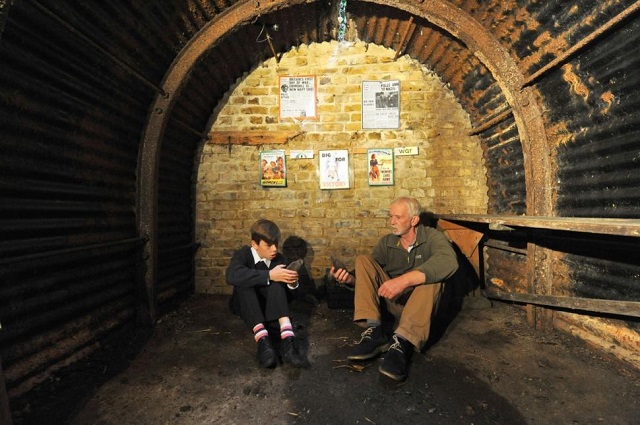A group of school children from Kent have located an old WWII bunker that was used as shelter from bombardments during the war. Known as the Anderson shelter, the small structure is just large enough to house half a dozen people in the case of an emergency. Despite the age of the old WWII bunker, it appears to still be operable, as it is structurally maintained and still powered by electricity.
It has been about seventy years since anyone stepped foot inside the Anderson shelter, but the lack of use may be one of the factors influencing its current working state. It was discovered by children attending the Stoke Community Primary School when one student in particular, Harvey Cotton, saw the outside walls of the WWII bunker and decided to investigate further. Even the school’s caretaker was previously unaware of the Anderson shelter’s presence until notified by Cotton. It was largely concealed by large walls of brick and concrete, which had to be removed before the caretaker and a parent could gain access.
Not only were all of the shelter’s items still intact, but the electricity still worked as well. This discovery was made when they switched on the overhead light bulb by plugging it in to an extension cord. School officials believe the WWII bunker was primarily used to protect school children from the Blitz, although its size indicates that not much more than six people could fit inside at one time. Now, the school is looking for new ways to use the Anderson shelter, including education regarding the war.
A stronger source of power will be run to the shelter in order to provide necessary electricity for it to become a place of learning. They are hoping that by utilizing the old WWII bunker as a place of learning, they can educate students while also bringing together the town by allowing survivors of the war to share their experiences there. They are currently seeking any town residents who may have made use of the Anderson shelter during the Blitz, the Daily News reports.
The Anderson is in startlingly good condition for a WWII bunker of its age. If it truly was used during an air raid or bombardment, then its structure has held up astoundingly well. Anderson shelters are a relatively common model of WWII bunker, with over three million having been created both before and during the war. Even if the school cannot find residents who used this particular shelter, they should be able to find someone who has taken refuge in a similar model.
